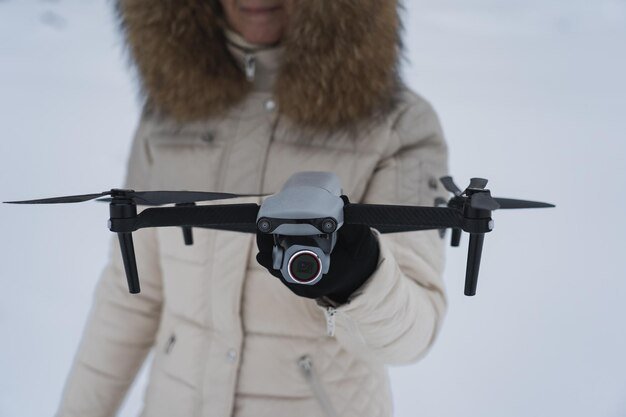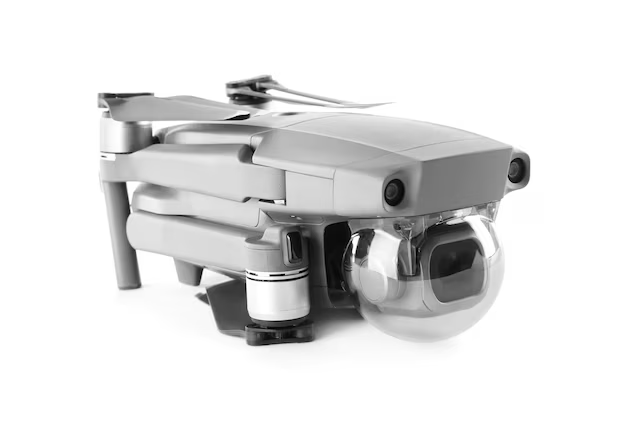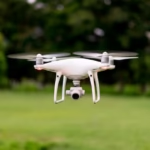Best types of camera on drone work different. Drones have become an important tool across various industries, such as agriculture, filmmaking, construction, and environmental monitoring. A major factor behind their increasing usefulness is the variety of advanced cameras they can carry. In this article you will find out all types of camera that are using in drones and their specifications, how to use, cost, limitations, advantage and also where you can buy them.
1. RGB Cameras (Standard Cameras)
Description: RGB cameras are the most common for using in all drones. It is used to taking visuals in red, green, and blue tones to look like human vision. They’re perfect for drone enthusiasts and filmmakers seeking vibrant, true-to-life imagery.
- Working Principle: Uses CMOS or CCD sensors to process light into RGB (Red, Green, Blue) images. Often mounted on 2-axis or 3-axis gimbals for stability.
- Specifications:
- 1080p to 8K resolution
- Optical zoom in advanced models.
- wide-angle lenses
- Cost: $300–$3,000
- Applications: Aerial photography, videography, real estate, tourism, social media content.
- Advantages:
- High-resolution imaging (up to 8K).
- Easy to operate and widely available.
- Suitable for amateurs and professionals.
- Limitations:
- Limited to visible light.
- Not useful in low-visibility or specialized applications.
- Examples: DJI Mini 3 Pro, Autel EVO Lite+.
2. FPV (First-Person View) Cameras
Description: Designed for live-streaming the drone’s view in real-time with minimal latency. Primarily used in racing drones.
- Working Principle: Transmits low-latency video feed directly to FPV goggles or a controller. Focuses on smooth streaming rather than high resolution.
- Specifications: 720p to 1080p resolution, low latency (up to 50ms).
- Cost: $100–$1,000
- Applications: Drone racing, freestyle flying, and immersive aerial experiences.
- Advantages:
- Real-time, low-latency feed for precision control.
- Lightweight and durable.
- Affordable for hobbyists.
- Limitations:
- Lower image quality compared to other cameras.
- Limited to real-time streaming and not ideal for recording professional footage.
- Examples: DJI FPV, BetaFPV cameras.

3. Thermal Cameras
Description: Thermal cameras identify heat signatures and create thermal maps. It is used for allowing visibility in darkness or harmful conditions.
- Working Principle: It is captures infrared radiation emitted by objects. It is used to displaying heat differences as a color gradient image.
- Specifications: Resolution from 640×512 to 1024×768 pixels. Temperature detection range (-20°C to 150°C or more).
- Cost: $2,000–$15,000
- Applications:
- Firefighting and search-and-rescue operations.
- Infrastructure inspections (detecting overheating in electrical systems).
- Wildlife monitoring and poaching prevention.
- Advantages:
- Operates in low visibility, such as smoke, fog, or darkness.
- Helps locate heat leaks, injured individuals, or animals.
- Limitations:
- High cost.
- Lower resolution compared to visual cameras.
- Examples: DJI Mavic 3T, FLIR-equipped drones.
4. Multispectral Cameras
Description: Multispectral cameras takes image data across a range of wavelengths. It is typically including both near-infrared (NIR) light and visible. This technology is mostly useful in agriculture. It helps measure crop health and soil conditions by analyzing variations in light reflectance. These lights indicate plant stress or nutrient deficiencies.
- Working Principle: It is use to records light outside the visible spectrum (e.g., near-infrared, red edge). It is used for agricultural or environmental monitoring.
- Specifications: Usually 4–6 bands. Resolution typically lower than RGB cameras but sufficient for analysis.
- Cost: $3,000–$10,000
- Applications:
- Precision agriculture (monitoring crop health).
- Environmental studies (forestry, wetland mapping).
- Water quality and soil fertility analysis.
- Advantages:
- Identifies crop stress, plant diseases, and soil conditions.
- Enables efficient resource management in agriculture.
- Limitations:
- High cost and niche application.
- Requires expertise in data interpretation.
- Examples: DJI P4 Multispectral, Micasense Altum.
5. LiDAR Cameras
Description: LiDAR cameras use laser pulses to measure distances by timing how long it takes for the light to reflect off objects and return. This technology creates highly perfect 3D models of environments. That’s making it perfect for applications like mapping and surveying.
- Working Principle: It produce laser beams and measures the time taken for them to reflect back. It is creating a 3D point cloud map.
- Specifications: High point density (100,000+ points per second)
- Range up to 200 meters.
- Cost: $10,000–$50,000
- Applications:
- Topographic mapping, construction, and surveying.
- Archeological site exploration.
- Forestry and flood mapping.
- Advantages:
- Generates precise 3D maps.
- Works in low-light conditions and through vegetation.
- Limitations:
- Very expensive and requires advanced processing tools.
- Examples: DJI Zenmuse L1, Velodyne LiDAR systems.
6. Zoom Cameras
Description: it offers optical or digital zoom capabilities to inspect objects from a distance with high quality.
- Working Principle: it provide lenses capable of magnifying far objects without compromising image quality (optical zoom) or by digitally increasing images (digital zoom).
- Specifications: Optical zoom ranges up to 30x or more
- resolution 1080p–4K.
- Cost: $1,000–$8,000
- Applications:
- Security and surveillance.
- Infrastructure inspections (bridges, power lines).
- Wildlife observation.
- Advantages:
- Detailed inspection from a safe distance.
- Reduces risk in hazardous areas.
- Limitations:
- Limited to inspection use.
- Higher costs for advanced zoom models.
- Examples: DJI Zenmuse Z30, Autel EVO II Enterprise.
7. Action Cameras (Mounted or Modular)
Description: External cameras like GoPro or Insta360, mounted on drones for dynamic, adventure-focused footage.
- Working Principle: Operate independently from the drone, often featuring rugged designs and 360-degree capabilities.
- Specifications: Resolution up to 5.3K, wide field of view, sometimes 360° recording.
- Cost: $300–$800
- Applications: Adventure sports, social media content, immersive VR experiences.
- Advantages:
- Versatile and rugged.
- Can be used across multiple platforms, not just drones.
- Limitations:
- Lacks drone-specific integration (e.g., stabilization, controls).
- Examples: GoPro Hero 11, Insta360 ONE R.
Purchasing Links:
- B&H Photo Video – https://www.bhphotovideo.com
- Adorama – https://www.adorama.com
- Amazon – https://www.amazon.com
- DJI Store – https://store.dji.com
- GetFPV – https://www.getfpv.com
- HobbyKing – https://www.hobbyking.com
Summary Comparison Tabl
| Camera Type | Cost | Best For | Advantages | Limitations |
| RGB Cameras | $300–$3,000 | Photography, videography | High resolution, easy to use | Visible spectrum only |
| FPV | $100–$1,000 | Racing, immersive flying | Low latency, affordable | Lower recording quality |
| Thermal | $2,000–$15,000 | Inspections, search and rescue | Heat detection, works in dark | Expensive, low visual resolution |
| Multispectral | $3,000–$10,000 | Agriculture, environment | Multi-band analysis | Niche applications |
| LiDAR | $10,000–$50,000 | Mapping, surveying | Precise 3D maps, versatile | Extremely costly |
| Zoom | $1,000–$8,000 | Inspections, surveillance | High magnification clarity | Limited versatility |
| Action | $300–$800 | Adventure, immersive videos | Rugged, multi-use | Lacks drone-specific features |



